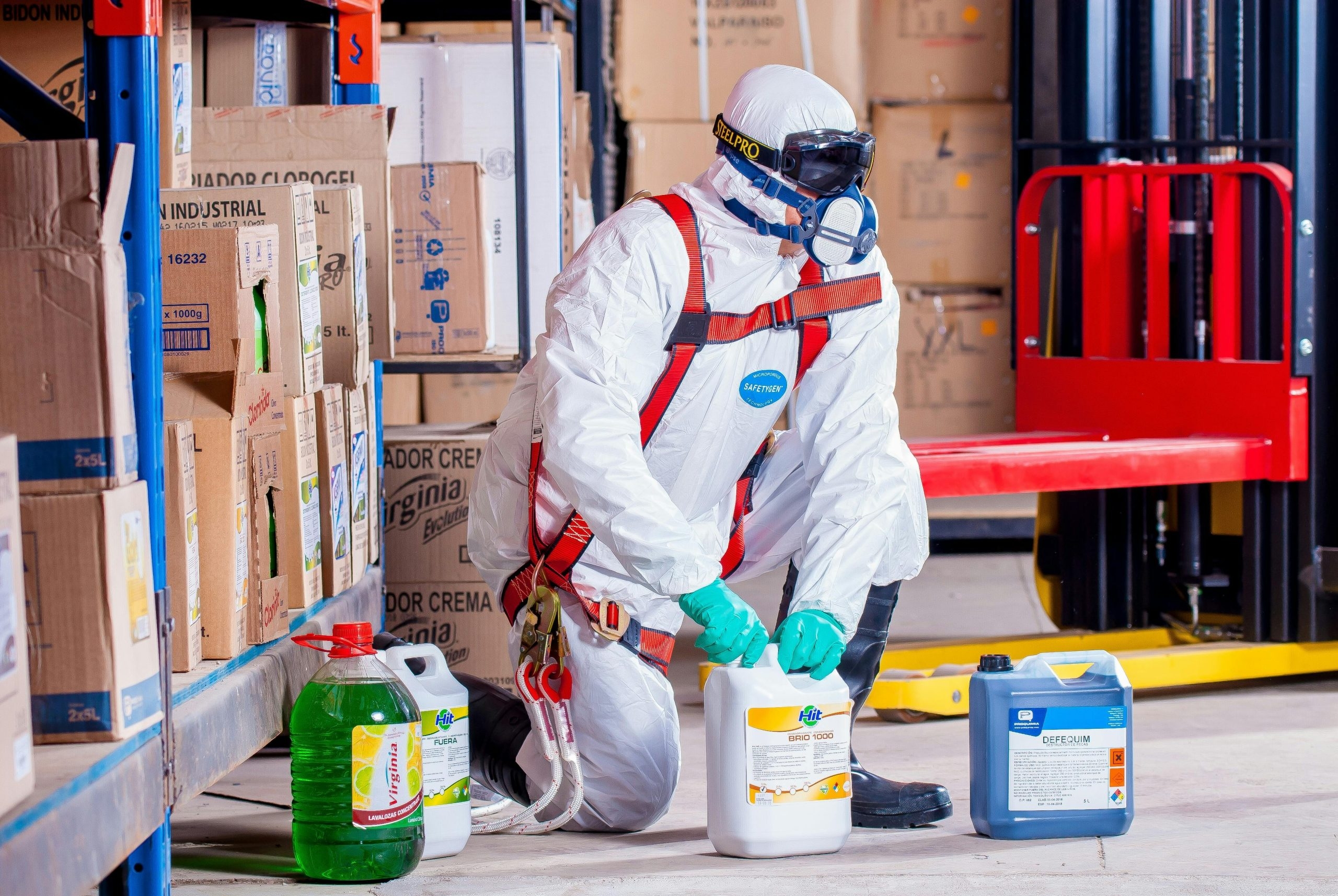 Wellbeing is defined by the Oxford English Dictionary as “the state of being or doing well in life; happy, healthy, or prosperous condition; moral or physical welfare (of a person or community).” Furthermore, positive working environments and avoidance of chronic stress are fundamental for workplace wellbeing. By ensuring that the work environment is safe, that there is a positive culture within the workplace and the right provisions, can lead to happy employees. This in return creates a positive working environment, influences job satisfaction, helps prevent stress and results in fewer sickness absences.
Wellbeing is defined by the Oxford English Dictionary as “the state of being or doing well in life; happy, healthy, or prosperous condition; moral or physical welfare (of a person or community).” Furthermore, positive working environments and avoidance of chronic stress are fundamental for workplace wellbeing. By ensuring that the work environment is safe, that there is a positive culture within the workplace and the right provisions, can lead to happy employees. This in return creates a positive working environment, influences job satisfaction, helps prevent stress and results in fewer sickness absences.
Considering Workplace Wellbeing
The aim of this article is to look at workplace wellbeing and to provide guidance on the measures that can be taken to ensure the wellbeing of all employees. The charity Mind report that
“60% of employees say they’d feel more motivated and more likely to recommend their organisation as a good place to work if their employer took action to support mental wellbeing.”
It would seem that people are still very nervous and find it difficult to have conversations surrounding mental health and wellbeing. With this in mind, it is important for employers to encourage and promote discussions of mental health and wellbeing and to raise awareness.
A good starting point to developing a positive and healthy workforce is by ensuring that the Management Team within the company are adopting good working practices, and leading by example which in return will encourage employees to behave in a way that will promote positive wellbeing. To illustrate this, management should be encouraging employees to work sensible hours rather than having employees working overtime and working at weekends, especially if they are a home worker. Furthermore, research from a YouGov study found that 2 out of 5 people in the UK are not using their full annual leave entitlement. This is based on the partly on the fear that they will have nobody to cover when they are away, and also that when they return their workload will have piled up leading to impossible levels to manage. Employees who experience high levels of stress are more at risk of making errors which in turn can lead to accidents happening such as slips, tripping over items, not observing obstructions etc.
Therefore, as an employer, employees should be strongly encouraged to take their full annual leave entitlement as there are so many health benefits which include, reduced stress, improved mood, improved productivity etc.
Workplace Wellbeing & Rest Breaks
Similarly, employees should be encouraged to take their full lunch breaks, evidence has shown that when employees take their lunch break entitlement it helps to combat stress and improves wellbeing.
Likewise, when employees are working with Display Screen Equipment, the Health and Safety (Display Screen Equipment) Regulations 1992 legally require a Display Screen Equipment User to have their work periodically interrupted by such breaks or a change of activity to reduce their time at the equipment. The recommended practice is 5-10 minutes for every 50-60 minutes of working. There is no requirement it should be an actual rest break, just that the display screen equipment user should have a break away from their screen to carry out a different task. Things could include:
- Making telephone calls away from their workstation.
- Printing out documents or carrying out a different task.
However, if there is no alternative work that can be done to interrupt the usage of display screen equipment, then you should plan for rest breaks. When you are assessing the usage of display screen equipment, look at how the work can be interrupted. It's always best to plan for shorter interruptions rather than employees working for longer periods at display screen equipment, as shorter interruptions have been found to support wellbeing.
Homeworking & Lone Working
Employees working alone are at potential risk of stress and poor workplace wellbeing due to the isolation.
- Communication and employee engagement is important in organisations and where employees are working out on their own in the community or at home, they are at risk of not being kept up to date with what is happening in the organisation.
- Engaging with employees makes the employee feel involved, gives them the satisfaction that they are being heard and understood and enables them to be kept up to date.
- During the Covid-19 pandemic many employees have felt anxious about attending their workplace in the event that they contract Covid-19. One measure to help reduce some of the anxiousness is through consultation with employees on the measures that the company have taken.
- Employee consultation, is a legal requirement under the Health and Safety (Consultation with Employees) Regulations 1996 (as amended), or the Safety Representatives and Safety Committees Regulations 1977 (as amended), if trade unions are present.
- Employers also have a moral responsibility to provide reassurance on health and safety matters including discussions on health and safety, risk assessments and accident follow-ups, all of which can lead to a positive workforce which subsequently leads to a positive mindset. More so, employee consultation whether it is a group or regular 1:1s can help identify issues early on, which in turn can enable employees to get the support they need.
Organisations should also be encouraging an open-door policy and promoting a culture of openness so that employees can feel confident in getting the support or requesting for a change to improve wellbeing. Open and supportive workplaces have so many benefits, it reduces the stigma around mental health, gives encouragement to employees to seek support and results in better job satisfaction.
Welfare Facilities
So far, we have discussed workload and working requirements, another significant factor that contributes to positive wellbeing is the physical work environment. By law, workplaces must provide welfare facilities for their employees, for further information please refer to our article on
Welfare Facilities Requirements.
Welfare facilities are necessary for the wellbeing of your employees as they help reduce the spread of infections and illnesses, and reduce the risk of stress. Lack of welfare facilities such as not having access to drinking water or somewhere to go to the toilet can lead to dehydration and urinary tract infections.
Worplace Wellbeing & Temperature
The temperature at work can influence employees productivity and their ability to work safely. Therefore, employers should assess and monitor workplace temperatures to fulfil their legal obligations under the Workplace (Health, Safety and Welfare) Regulations 1992.
The amount of natural light in the workplace can influence employee wellbeing. The more natural light into an enclosed space the better, with health benefits that include improvements to sleep patterns, greater focus, making people happier and improvements to individual’s circadian rhythms (the internal natural process of the sleep-wake cycle which repeats every 24-hours).
Working Environment
Finally, the physical condition and materials used within the workplace can influence employee wellbeing, the flooring as an example can influence wellbeing by the feel of it, the colour, whether it contributes to providing a comfortable workplace temperature, or whether the floor leads to excess noise through reflections.
It is interesting to note that from research studies, indoor plants in workplaces have an important role in removing indoor air pollutants. Jensen and van der Voordt (2019) found from their research on employee perception that
“occupants of planted offices feel more comfortable, productive, healthy and creative and feel less pressure than occupants of non-planted offices.”
As an employer you are legally required to carry out a risk assessment to ensure the health, safety and welfare of your employees. As part of the risk assessment process, you are required to identify the hazards that could give rise to harm to ill health or injury. Mental health and wellbeing should be considered in all risk assessments.
To illustrate this, if the workplace temperature is too cold for office workers which makes them feel uncomfortable, this will lead to a lack of concentration and increased levels of stress. Therefore, as a control measure you could monitor the workplace temperature, and ensure central heating is installed and used effectively. By managing and controlling the hazard of workplace temperatures, the morale amongst employees will increase leading to positive wellbeing.
To conclude, there are a number of factors that can lead to poor wellbeing in the workplace but having a positive work culture, a safe working environment and access to workplace facilities can all positively influence wellbeing. By encouraging and investing in mental health and wellbeing in return can lead to employees working more productively, and lead to happier and healthier employees.
Speak to our Health and Safety team today, for practical advice and support you can trust. Wellbeing is defined by the Oxford English Dictionary as “the state of being or doing well in life; happy, healthy, or prosperous condition; moral or physical welfare (of a person or community).” Furthermore, positive working environments and avoidance of chronic stress are fundamental for workplace wellbeing. By ensuring that the work environment is safe, that there is a positive culture within the workplace and the right provisions, can lead to happy employees. This in return creates a positive working environment, influences job satisfaction, helps prevent stress and results in fewer sickness absences.
Wellbeing is defined by the Oxford English Dictionary as “the state of being or doing well in life; happy, healthy, or prosperous condition; moral or physical welfare (of a person or community).” Furthermore, positive working environments and avoidance of chronic stress are fundamental for workplace wellbeing. By ensuring that the work environment is safe, that there is a positive culture within the workplace and the right provisions, can lead to happy employees. This in return creates a positive working environment, influences job satisfaction, helps prevent stress and results in fewer sickness absences.






